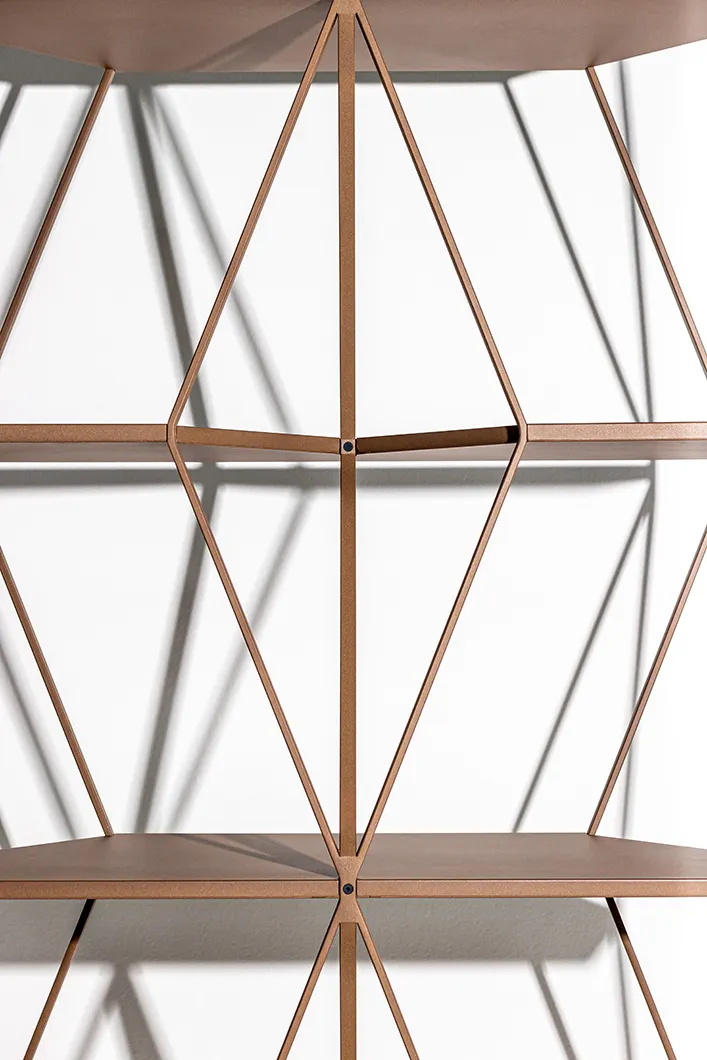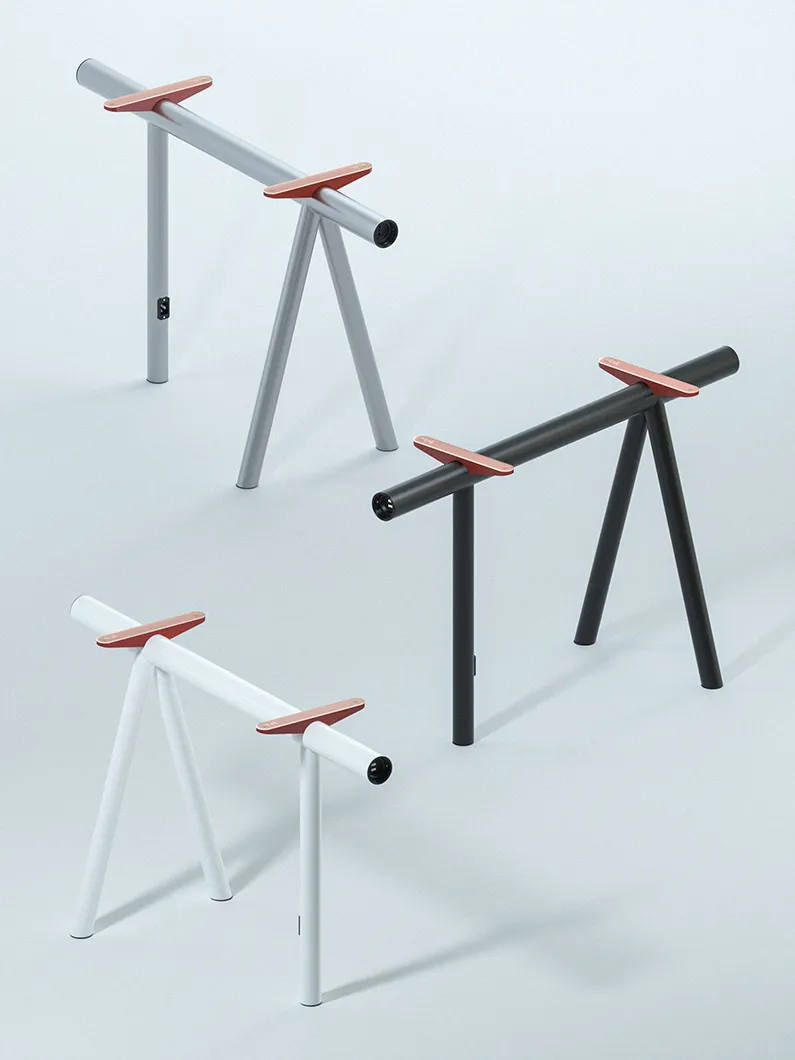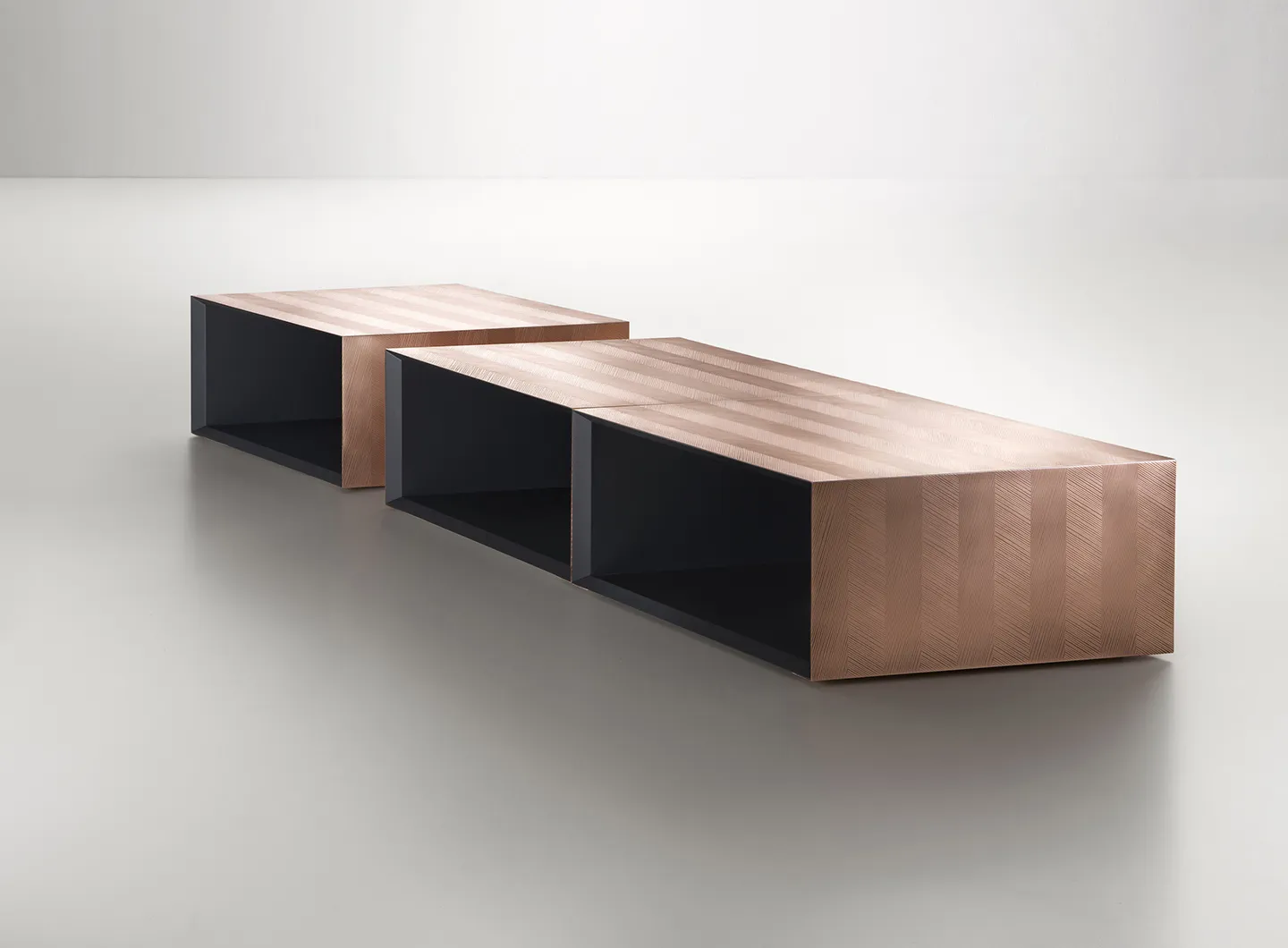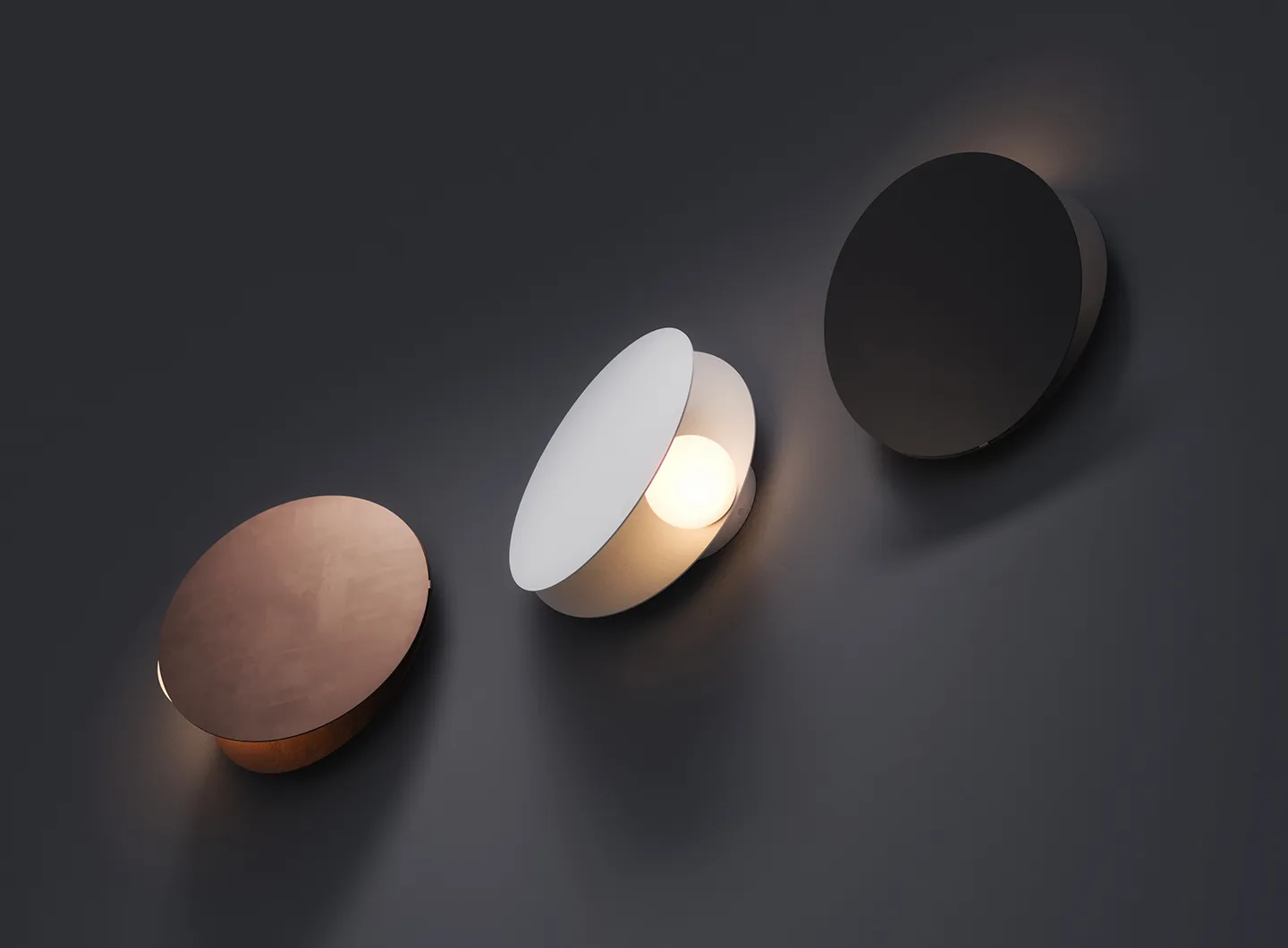In partnership with MiCodmc, a selection of establishments ripe for discovery during the 63rd edition of the Salone del Mobile.Milano, from 8th to 13th April

Latteria by Keiji Takeuchi for Fucina
Interest continues to grow in products made from the versatile, resistant and noble materials of steel, aluminium, copper, and brass, not least because they are infinitely recyclable. Nowadays fully part of the home, they are also a sustainable choice.
“In recent years, we’ve seen a re-evaluation of metal in the furniture world, especially the home segment,” says Sandro Fantin, engineer/CEO of the company that bears his name, based in Fiume Veneto (Pordenone). “Thanks to their essential design, customizable through a large number of finishes, our products play their part in creating beautiful and comfortable environments. Our hard work is being rewarded: we have striven to give metal a soul, using processes such as embossed coatings – when people touch them, they exclaim: ‘It doesn’t seem like metal!’ Despite the fact that over the last year or so the price of raw materials has shot up like never before, more than tripling and forcing us to intervene on our product price list, both our turnover and sales network have continued to grow.” Founded in 1968, in recent years the Fantin company has focused on developing steel furnishing collections suited to every context, whether it be the home, the office, retail or industry.
“We have worked with equal intensity on shapes and finishes, in just a few years doubling the number of colors we offer from twenty to over forty, thanks to technological investments in non-toxic powder coatings,” adds Art Director Salvatore Indriolo. Over the last five years, Fantin has increased turnover by more than 50%, nearing €4 million at year-end 2021. The company’s choices have been rewarded by continuous growth in turnover and market presence: “We began with Austria and Germany, then Belgium, Holland, and France. Interest in Italy has been growing steadily too, and we’re also starting up in the US and Asia.”
One element attracting customers is the inherent sustainability of metal products, not to mention the fact that they are 100% recyclable. “We process already-recycled materials, and the products can later be reused, creating an infinite virtuous circle. We build on this by conceiving products that are built to last. For example, our Frame kitchen is designed to be like a workstation, allowing it to be moved rather than thrown away,” explains Fantin. “For all these reasons, we are very confident going forward,” concludes Indriolo.
Fantin partnered with Moroso to make Olafur Eliasson’s Secret Cubic Shelves, presented at the recent “Supersalone” and developed out of the Green Light – An Artistic Workshop installation at the 2017 Venice Biennale. The Danish-Icelandic artist has long focused on resources in his research. In this new edition, the bookcase is made entirely from recycled and recyclable steel, with a non-toxic powder coating.
Aluminium is another metal that can be melted down and reused indefinitely, as US company Emeco is well aware: “It’s super-strong, light and fireproof. It is also non-corrosive, non-magnetic and non-bacterial. Little wonder, it was chosen for the 1006 Navy Chair in 1944 [ed. the chair for U.S. Navy ships manufactured by the company]. Aluminium can be indefinitely recycled. Most of the aluminium produced in the late 1800s is still in use today in cans, pans, computer parts and golf clubs. And, yes, in our chairs too,” we read on the company’s website. Emeco’s latest products to showcase the metal’s qualities include the Za stool designed by Naoto Fukasawa, available in anodized, brushed, and powder-coated finishes. Latteria is an aluminium stool designed by Keiji Takeuchi for Fucina, a brand created as part of Lidi, a company based in Desio (Monza Brianza) that for more than fifty years has worked on facades, stairs, and steel, aluminium and other metal frames; the stool is milled out of a single block of 5 cm-thick aluminium.
“Aluminium and steel have long since fully earned their place in the home and at community venues,” says Albino Celato, Managing Director of the Crocetta del Montello (Treviso) company which transforms metals into surfaces and furniture collections. “These metals’ characteristics are widely-appreciated; they have struck a particular chord in the world of industrial and artistic design. Perhaps due to a resurgence in decor, in recent years, we have experienced a rise in demand for brass and copper. Noble materials, they benefit from very high intrinsic value, are resistant, and can be used with a wide variety of finishes (such as oxidation, flaming, brushing) that significantly modify their aesthetic while leaving the virtues of the material unchanged. For example, at De Castelli we have twenty-four different finishes available in the catalogue for copper alone, to which various processes can then be applied.” The most recent of the company’s collections, Copper at Home, created to explore the material’s antibacterial properties, includes Alpha by Martinelli Venezia, a small modular container table with a rhomboidal base, and a natural copper skin processed using the DeErosion controlled-erosion technique.”
Federica Biasi, Mingardo’s Art Director, defines metal as “a simple material, one that can span the simplest and most complex processes. Always noble and rich, this makes it very flexible, including in cost terms. It is more complicated to use in single-material versions, as we have always done at Mingardo; we are seeking to ’soften’ the products with other materials, while maintaining our focus on processing.” Founded as the Carpenteria Metallica Mingardo in Monselice (Padua) in 1970, this year the company took part in the Flame for Research project at Milan Design Week, when a collection of candelabra created by ten designers was auctioned off; the proceeds went to the Istituto Mario Negri.
“Metals unleash incredible creativity, facilitating the manufacture of tensioned shapes, curvatures and ultra-thin thicknesses that cannot be achieved with other materials, leading to items of furniture that look like unique artistic pieces even if they’re industrialized and mass-produced,” says Mirko Orsenigo, CEO and Production Manager at Desalto, a metalworking company in Cantù (Como). For example, as the name suggests, the MM8 table by Guglielmo Poletti, has a top just 8 mm thick. At the most recent “Supersalone”, among others the Brand presented the Koki Wire family of outdoor furniture by Pocci + Dondoli in drawn steel.
The metal profile catalogue extends to lamps, for example Filippo Protasoni’s Akoya collection – a wall or suspension lamp for indoor use, composed of two metal discs (in white, anthracite and Corten finishes) containing a blown-glass diffuser – for Fabbian, a company based in Castelminio di Resana (Treviso) that operates in lighting.


 Stories
Stories














































